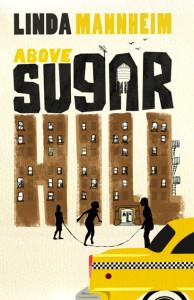 Published by Influx Press 31 May 2014
Published by Influx Press 31 May 2014
176pp, paperback, £9.99
Reviewed by Alison Burns
‘The southern edge of Washington Heights abutted Sugar Hill, the northern edge of Harlem. During the Harlem Renaissance, Sugar Hill was where Harlem’s elite lived: Paul Robeson, W.E.B. Du Bois, Justice Thurgood Marshall, Adam Clayton Powell Jr, Ralph Ellison, Willie Mays, Zora Neal Thurston, Duke Ellington, Langston Hughes…
‘But, by the time I was growing up, in the 1960s and ‘70s, Sugar Hill and Washington Heights were pretty much the way they are in these stories – filled with run down apartments and gunshot streets, heroin heated over flames and walls weeping with condensation.
‘I wanted one thing: to get out.’
Get out she did, at seventeen; but years later Linda Mannheim returned, ‘to understand the place I came from’.
In these site-specific stories, set from 1973 to 2001 between 145th and 181st Street, she brings to life a New York neighbourhood. Variously described as, say, Frankfurt-on-the-Hudson, or Quisqueya Heights, in response to immigration surges from Europe and Central America, Washington Heights has more to it than any label: its people. This thoughtful, generous writer shows us exactly who they are.
In ‘Marilyn Monroe on 165th Street’, a haunting story in more ways than one, eleven-year-old Laura looks at the influence of Marilyn on three little girls and one grown-up one. In ‘Once’, Nora looks back, aged thirty, on her late childhood and misspent youth, remembering neglect, physical and sexual abuse, truanting, drugs. ‘The Street’ recalls local boys; ‘Tenor’, the murder of a tenant organizer; Puerto Ricans are hunted by the FBI in ‘The Dust That Rises From Bombs’.
Mannheim’s is a rare voice, reminiscent of the wonderful Jo Ann Beard’s in The Boys of My Youth or Gloria Naylor’s in The Women of Brewster Place, a voice the reader wants to hear again. What she looks at, she really sees: ‘It is 1974. It is Saturday morning, spring-time, so there’s the early edge of heat, that smell of sun against concrete, the parts of the city that can loosen loosening.’ Or: ‘The MCC (Metropolitan Correctional Center) looks like any other building downtown. When you look up at the slick, long windows, you don’t see the bars. In New York, it’s late fall, which means that everything’s a little grayer than during the rest of the year. It’s always winter near Wall Street.’
Here is an office worker: ‘I worked ten blocks away for two years, temping for a man who talked to me like I was a toddler. Tight lips pulled over perfect teeth. You’re looking very nice today, Elena. Very nice. Still, it meant not having to sit in the temp agency waiting to get sent out while I did desperate arithmetic with my debts and watched the white girls get sent out first.’ Here, a woman who made it out and up is waiting for her fix of heroin: ‘You’re standing in the doorway, waiting for the man to come, waiting for the cranberry BMW with Jersey plates. It comes and you go, open the door just enough so you can hand him the cash and he hands you the tiny bag and you take it like it’s a ticket home, the cellophane smooth in your palm. You reach back in and shake his hand, automatically giving him that forced smile you save for all your business transactions.’
Acclaimed by fellow-authors Eimear McBride, Stuart Evers and Alison Moore, Linda Mannheim is a real find. Influx Press of Hackney Downs in London are to be congratulated.
